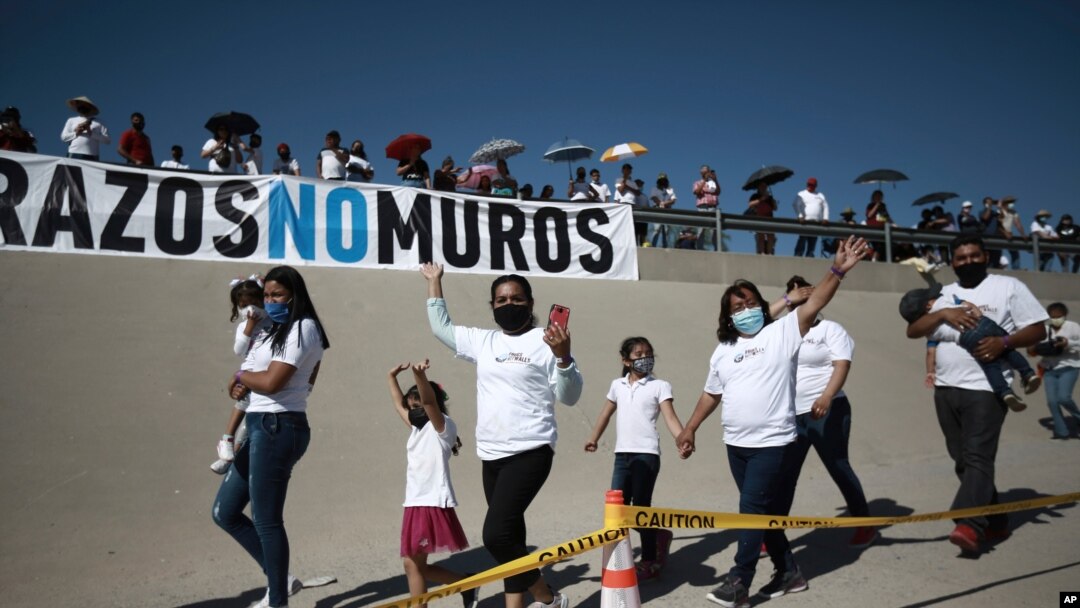Kamala Harris is scheduled to visit the U.S.-Mexico border Friday for the first time since becoming U.S. vice president and taking a lead role in the Biden administration’s response to a decades-high surge in migration.
Harris travels to El Paso, Texas, with Homeland Security Secretary Alejandro Mayorkas. She previously visited the southern border as a U.S. senator and California attorney general. Republican lawmakers have sharply criticized her for not taking a first-hand look at critical problems at the border as vice president.
Earlier this month, Harris traveled to Guatemala where she conveyed the Biden administration’s determination to address the root causes of migration. The White House is proposing a multibillion-dollar aid package to address economic and security challenges in the Northern Triangle nations of Honduras, El Salvador and Guatemala.
Here is a snapshot of the current situation and most recent trends at the U.S.-Mexico border.
Border encounters, deportations
The most recent enforcement data from U.S. Customs and Border Protection (CBP) show 180,034 migrants were apprehended along the US-Mexico border in May, a slight increase from 178,622 in the previous month.
Single adults continue to account for most of these encounters. In May, CBP removed 112,302 foreign nationals under Title 42, a guideline put in place during the former Trump administration that gives CBP authority to expel migrants who enter the country without authorization during the coronavirus pandemic. The Biden administration has modified the guideline to allow unaccompanied minors and some families with small children to pursue asylum claims in the United States.
U.S. authorities also encountered 10,765 unaccompanied children in May, down from 13,940 in the month of April.
Totals for June will be issued in early July.
SEE ALSO: US to Expedite Immigration Cases of Families at Southern BorderMigrant youths in U.S. custody
As of June 23, the number of unaccompanied migrant children in U.S. custody stood at nearly 16,000. According to the U.S. Department of Health and Human Services (HHS), about 1,000 minors were being held in Border Patrol holding facilities, while 14,900 migrant children were under HHS care.
Harris will also have a chance to visit children held at an emergency shelter in Fort Bliss U.S. Army base in El Paso. Multiple news reports have documented inhumane and deplorable conditions at the facility.
Earlier this week, BBC reported first-hand accounts of overcrowding, slow and inadequate medical treatment for transmissible diseases and parasitic infestations, a lack of clean clothes and improperly cooked food.
In recent court filings, migrant children held at the facility described severe physical and emotional distress leading to depression and, in some cases, suicide risks.
In one court document filed earlier this month, a 13-year-old unaccompanied Honduran migrant stated, “I was held in a big white tent with nylon walls. The tent was so cold that everyone called it a freezer. … Many times I have been given chicken that was bloody and raw. I remember that during one meal, my friend was given chicken that still had feathers in it and she had to pull out the feathers.”
The Fort Bliss facility was first used to house detained migrants during the Trump administration.
On Wednesday, an HHS spokesperson said the agency has taken action to improve the conditions at Fort Bliss and all emergency influx sites.
“Children are receiving nutritionally-appropriate meals and there are now over 50 mental health professionals on site at Fort Bliss and counselors at all other emergency influx sites,” the spokesperson said in an email to VOA.
Asylum claims
U.S. law offers asylum to those people facing persecution in their home countries on the basis of race, religion, nationality, political opinion or membership in a particular group.
Though there are two kinds of asylum -- affirmative and defensive -- not all asylum claims arise from migrants arriving at the border. An immigrant may claim affirmative asylum within one year of their last arrival in the United States or request a defensive asylum while fighting an order of deportation.
According to the Transactional Records Access Clearinghouse (TRAC) at Syracuse University, a research center that collects and analyzes data on immigration court activities, so far in 2021 there have been 15,320 asylum decisions in which 10,578 cases were denied relief and 4,488 in which humanitarian relief was granted. Twenty-five cases resulted in other forms of relief.
Current status of the wall
President Joe Biden suspended wall construction along the U.S.-Mexico border on his first day in office. Hundreds of kilometers of border barriers were erected or strengthened during the Trump administration.
A "#HUGS NOT WALLS" banner is displayed along the border wall as part of 8th annual event on the Rio Grande, in Ciudad Juarez, Mexico, June 19, 2021.
On June 11, the White House announced plans to return more than $2 billion in funds that the previous administration redirected from the Pentagon to help pay for the wall.
As a presidential candidate last year, Biden criticized new wall construction. Testifying recently on Capitol Hill, Homeland Security Secretary Mayorkas signaled the administration is contemplating enhancing existing physical barriers. He said DHS is “studying border wall construction" and that officials were examining gaps in the wall to determine the best way to secure the border.


